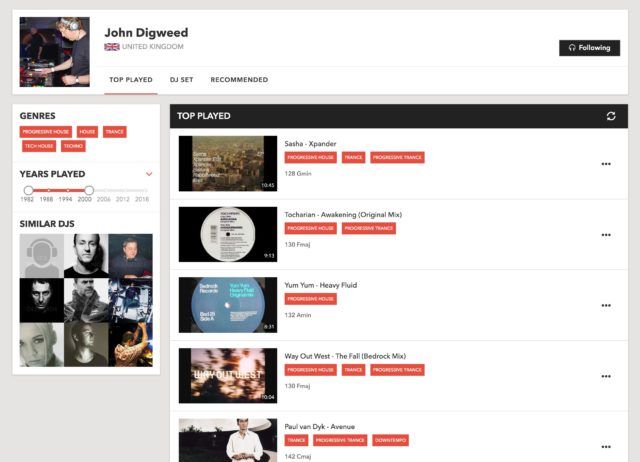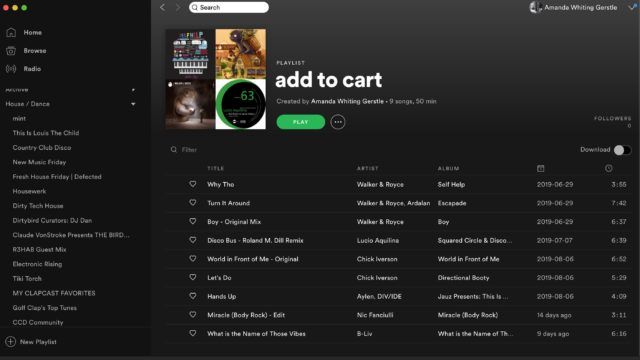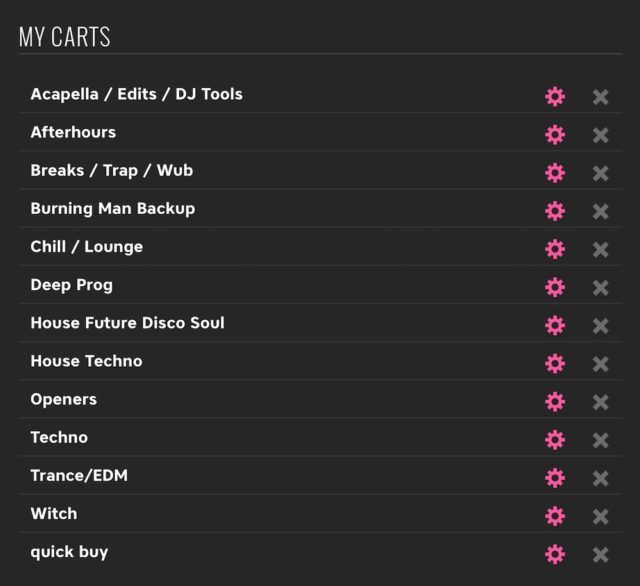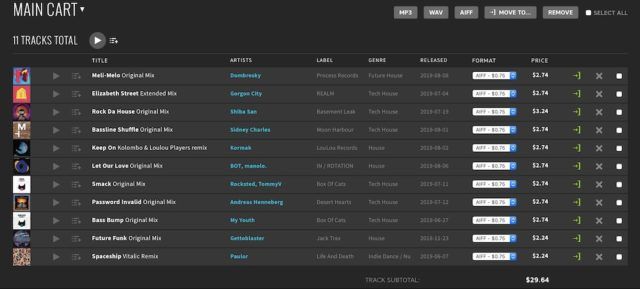Today, new contributor Amanda shares an amazing article focused on doing smarter shopping for music for your DJ sets. These are practical strategies that you can apply when you next go hunting for tracks on Beatport, Traxsource, Bandcamp, and so on.
We’ve all been there. You buy a grip of new music that you’re sure will light the dancefloor, but then when you start going through them a few days later (or, God forbid, you’re playing them for the first time at a gig), they just don’t have the magic that you remember them having. Some of them are downright terrible.
Yep, you just spent a hundred bucks on a bunch of mediocre tunes. And that one that was actually really good? Buried. You can’t find it.
There’s nothing worse than buyer’s remorse. Buying tracks you never end up playing can dilute the quality of your music pool, not to mention drain your wallet. But with some careful strategy on the front end, you can build a collection that has nothing but Grade A+ quality tracks. Really!
Try this strategy on for size:
Step 1: Listen with Intent
Like many creative endeavors, time can either be your friend or enemy when curating your music collection. Starting from scratch when you have an impending gig will add stress, and stress leads to poor decisions. So, do yourself a favor and weave music shopping into your life. Listen to new music that you could potentially use for DJing from multiple sources as much as possible when there is no pressure.
Listening to potential new tracks often will get you familiar with how music affects you at different times of the day. In addition, listening and ultimately buying music that you’ve found from multiple sources will give you a much more unique sound than a DJ that say, only shops on the Beatport Top 100 charts.
Music services on the web can be broken to a few basic categories:
- Digital music sites like Beatport, Traxsource, and Junodownload all have charts of best-sellers, as well as the ability to earmark your favorite artists and labels. While you can only listen to a few minutes of each song, this can be a good thing. Not only will it allow you to sift through songs faster, it will force you to make snap decisions on whether is song is a keeper or a dud – and oftentimes your first instinct is correct. While it’s easy to gravitate towards one site, it’s an advantage to browse multiple stores from time to time and see where each unique brand takes you.
- Streaming services allow you to listen to full songs. Spotify is excellent for playlists curated by humans and computers alike. Some of the most trendsetting hip hop and electronic music playlists are ones curated by Spotify employees themselves (Mint, Housewerk, Dance Hits, Most Necessary) and your favorite artists and labels often share music from their brand and other like-minded artists. Soundcloud is great for unreleased and up and coming artists – sometimes unreleased artists will even have their music available for free download. Youtube, though sometimes overlooked, is great for finding new music. A new platform, called Mu6ik (still in public beta) harnesses the power of Youtube to help you find dance music that is played by your favorite DJs, and is something I’ve personally been using a lot lately.
- Social Media platforms like Facebook and Reddit are great places to find producers who are looking to get their music played by DJs just like you. You may have to sift through some less than stellar offerings, but if you find a diamond in the rough, you will have a special gem almost all to yourself.
- And of course, there’s the time honored tradition of trainspotting, which, thanks to Shazam, is stealthier than ever.
Once you have your go-to music sites and playlists, listen through them regularly. As you find music you would consider playing in a DJ set, save it in a special folder or playlist. This will be your contestant pool for upcoming music purchases.

Step 2: Shop with Purpose
You get the call – you have a gig in a few days! Lucky for you, you’ve already been listening to oodles of potential music for DJing and you have some music earmarked from your various sources.
You may have a nice wide range of taste of potential music, but the most efficient and cost effective way to buy music is to buy tracks only for your current needs. So if you have a banging EDM gig coming up, resist buying that deep house track that might go great for a future mix. Save the money for your pumpkin spice latte addiction instead of a file sitting in some folder, cluttering your collection until “someday.” Instead, put it into some sort of B-List playlist or cart that you can draw on later.

Once you’re confident that you have gathered all the tracks for the project at hand on each music platform, transfer them to the main cart of your music shopping platform of choice. It’s time for the final throwdown:
- Determine ahead of time how many tracks you need to buy – My rule of thumb is to never buy more than 20 tracks at a time — any more than that and it will be extremely difficult to remember what you bought. If you are still short on music, go back to your existing collection and dig up some old gems. The perfect song you’re looking for may well be one you already have!
- Compare all of your final contenders – Once you know how many tracks you’re going to buy, commit to filling these slots with the best tracks possible. 99% of the best tracks that are worthy of putting your cold hard cash down for are tracks that make you feel something — cool, sexy, happy, silly, angry. Anything else must be relegated to your “B” list.
- Repetition is key – If you have time, listening to your finalists multiple times in different situations will give you stellar results. Listen to your potential new tracks in the evening, in the morning, in the shower, drinking wine, cooking dinner, in your car, and while you’re working out. Listen often, but don’t listen too closely — the best tracks will grab your attention time and time again, and you’ll know you have a winner.
- Rejoice in deleting tracks that aren’t cutting it – Every song you delete or put in a rainy day bin is one piece of regret you don’t have to carry around with you. Your future self will thank you!

Step 3: Buy with Confidence
Ready to take the plunge and buy your music? Here are a couple last minute things to keep in mind before pressing the big bad “Buy” button.
- Listen through all of your tracks one more time – Make sure you’re saying “hell yes!” over and over to all of the tracks you’re going to buy. Like many opportunities in life, if it’s not a “hell yes!” then it’s probably a no. If it’s good, but not a “hell yes!” put it in your backup crate for a rainy day. It might be the perfect vibe for another project altogether.
- Save money by buying MP3s instead of lossless AIFF or WAV files –If you’re playing on large sound systems and at festivals, having AIFF or WAV files for all of your tunes is a good idea. But if you’re playing at house parties or local bars, 320kpbs MP3s may be fine. You’ll save a lot of money that way.
- Look for sales, but don’t be a slave to them – A sale is a great time to pull the trigger on a bulk new music purchase, but make sure you’re buy tracks on your schedule, not theirs. If you feel pressure to buy because a sale is ending, you may end up rushing and buying tracks that you will later regret. Keep your eyes on the prize.

With this strategy over time, you are more likely to consistently add new music that fits your style, your taste, and your upcoming project, and you’ll cut down on clutter in your collection.
Try it out for yourself — all you have to lose is mediocre music! Let us know how it works out in the comments below, or if you have any tried and true shopping tips that work for you.





